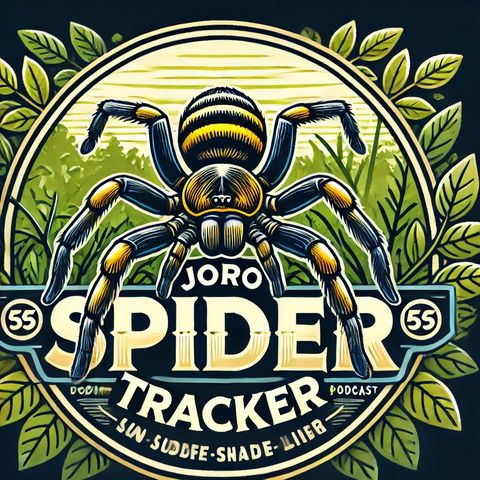Alarming Arrival: The Joro Spider's Invasion of the US

Sign up for free
Listen to this episode and many more. Enjoy the best podcasts on Spreaker!
Download and listen anywhere
Download your favorite episodes and enjoy them, wherever you are! Sign up or log in now to access offline listening.
Description
The Joro spider, a sizeable colorful arachnid native to East Asia, has been gaining attention as it spreads across the United States. Originally from Japan, the Joro spider is part...
show moreThe growing visibility of Joro spiders has led to increased calls to local experts, such as the Master Gardeners at Rutgers, by concerned residents mistaking native species for this foreign invader. This confusion is understandable given the spider's notable size and unique appearance; adult Joro spiders can have a leg span of about the size of a human hand.
The Joro spider's expansion in the U.S. is notable in part due to its resilience and adaptability. Unlike many other spider species that struggle with the colder temperatures found in many parts of the U.S., Joro spiders have demonstrated a remarkable ability to survive and even thrive in variable climates. This adaptability increases their potential spread, particularly across the eastern U.S., where they have been most commonly reported.
The name "Joro" originates from an old Japanese myth about the "Jorogumo," a creature that can transform into a beautiful woman who entraps men with silk. This mythological backdrop adds a layer of intrigue to the spider's presence, blending folklore with natural history. In reality, Joro spiders use their silk to create impressive orb-shaped webs that serve as effective traps for various insects, demonstrating their ecological role in controlling pest populations.
Despite their daunting size and the myths surrounding them, Joro spiders are not considered dangerous to humans. They are venomous, like most spiders, but their venom is not harmful to humans, focusing primarily on immobilizing their insect prey. Observers suggest that although the spread of the Joro spider could potentially impact local ecosystems, through competition with native species or predation, the precise ecological impact remains to be fully understood and is a current subject of study.
Overall, the spread of the Joro spider across the United States serves as a fascinating example of how global travel and trade can inadvertently lead to the introduction and establishment of non-native species in new environments. It also highlights the important role of local experts and Master Gardener programs in educating the public about these new residents, dispelling myths, and studying their impact on local ecosystems.
Information
| Author | QP-4 |
| Organization | William Corbin |
| Website | - |
| Tags |
Copyright 2024 - Spreaker Inc. an iHeartMedia Company
